Clarke Studies Revisited
The Famous Technical Studies Reorganized by Key
Details
Description
SKU: CF.WF204
The Famous Technical Studies Reorganized by Key. Composed by Herbert Clarke. Edited by Larry Clark. Arranged by Larry Clark. SWS. Contemporary. Student book. With Standard notation. 68 pages. Carl Fischer Music #WF204. Published by Carl Fischer Music (CF.WF204).ISBN 9781491144640. UPC: 680160902149. 9 x 12 inches.
The Herbert L. Clarke Technical Studies for the Cornet has served many generations of trumpet players as the seminal book for the improvement of technical facility on the instrument. In an effort to introduce these great studies to less experienced trumpetists, Larry Clark has reorganized the studies in a key-centered approach to let developing players get comfortable with the studies in the easier keys first before moving on to more challenging ones. All of the studies are organized by key starting with the key of C major/A minor and moving on to one flat, one sharp, two flats, two sharps, etc., with the exception of the tenth study that focusses on grace notes. The eight etudes have been placed near the back of the book.
This work has been especially written to enable the cornet student to conquer any technical difficulties he or she might encounter in the literature for the instrument. By carefully following the instructions in this book, the student will build up strength and endurance without strain or injury to his or her embouchure. If the lips remain flexible and the tone is not forced, it will be possible to play easily any note, regardless of the register. The exercises in this book are not very difficult if practiced slowly at first. I have used them for years in my daily practice to maintain my endurance and to prevent fatigue. Hard work and dedication will be required to achieve a high degree of excellence. However, by correcting your slightest mistakes and by striving for improvement each day, your efforts will be rewarded by conquering what seemed, at first, impossible. The student should familiarize himself with as much of the cornet repertoire as possible, in order to gain a substantial and diverse musical background. The third book of this series contains slightly more difficult studies of every description, which have been graded with the same care as the contents of this second series. The Herbert L. Clarke Technical Studies for the Cornet has served many generations of trumpet players as the seminal book for the improvement of technical facility on the instrument. Clarke was an amazing technical player by all accounts, and brass players have benefited from his carefully written exercises for building fluidity in their playing. Clarkes organization of the book has been steadfast over the years, with each study laid out in all keys and all ranges at once, before the player is to move on to the next study. Many teachers have used the book in a different manner from the way Clarke had originally intended. In an effort to introduce these great studies to less experienced students of the trumpet, teachers often have students learn each of the studies in order by key rather than all keys at once. This gives developing players a chance to get comfortable with the studies in the easier keys first before moving on to more challenging ones. This has meant for many years that teachers and students have had to jump around the book from one section to the next in order to work with the studies in this key-focused approach, until now. The Clarke Studies Revisited has been completely reorganized to accommodate a key-centered approach to the studies. All of the studies are organized by key starting with the key of C major (A minor) and moving then to one flat, one sharp, two flats, two sharps, etc., with the exception of the tenth study, since this study is focused only on grace notes. This study along with the eight etudes have been placed near the back of the book, since they are not key centric, and just the culmination of study. We feel that this new organization will help to introduce these ever-popular studies to more students, and in a manner that has become common in trumpet pedagogy. We hope that you find it a useful new tool for many more generations of trumpet players. Good luck!.
This work has been especially written to enable the cornet student to conquer any technical difficulties he or she might encounter in the literature for the instrument. By carefully following the instructions in this book, the student will build up strength and endurance without strain or injury to his or her embouchure. If the lips remain flexible and the tone is not forced, it will be possible to play easily any note, regardless of the register. The exercises in this book are not very difficult if practiced slowly at first. I have used them for years in my daily practice to maintain my endurance and to prevent fatigue. Hard work and dedication will be required to achieve a high degree of excellence. However, by correcting your slightest mistakes and by striving for improvement each day, your efforts will be rewarded by conquering what seemed, at first, impossible. The student should familiarize himself with as much of the cornet repertoire as possible, in order to gain a substantial and diverse musical background. The third book of this series contains slightly more difficult studies of every description, which have been graded with the same care as the contents of this second series. The Herbert L. Clarke Technical Studies for the Cornet has served many generations of trumpet players as the seminal book for the improvement of technical facility on the instrument. Clarke was an amazing technical player by all accounts, and brass players have benefited from his carefully written exercises for building fluidity in their playing. Clarkeas organization of the book has been steadfast over the years, with each study laid out in all keys and all ranges at once, before the player is to move on to the next study. Many teachers have used the book in a different manner from the way Clarke had originally intended. In an effort to introduce these great studies to less experienced students of the trumpet, teachers often have students learn each of the studies in order by key rather than all keys at once. This gives developing players a chance to get comfortable with the studies in the easier keys first before moving on to more challenging ones. This has meant for many years that teachers and students have had to jump around the book from one section to the next in order to work with the studies in this key-focused approach, until now. The Clarke Studies Revisited has been completely reorganized to accommodate a key-centered approach to the studies. All of the studies are organized by key starting with the key of C major (A minor) and moving then to one flat, one sharp, two flats, two sharps, etc., with the exception of the tenth study, since this study is focused only on grace notes. This study along with the eight etudes have been placed near the back of the book, since they are not key centric, and just the culmination of study. We feel that this new organization will help to introduce these ever-popular studies to more students, and in a manner that has become common in trumpet pedagogy. We hope that you find it a useful new tool for many more generations of trumpet players. Good luck!.
This work has been especially written to enable the cornet student to conquer any technical difficulties he or she might encounter in the literature for the instrument. By carefully following the instructions in this book, the student will build up strength and endurance without strain or injury to his or her embouchure. If the lips remain flexible and the tone is not forced, it will be possible to play easily any note, regardless of the register. The exercises in this book are not very difficult if practiced slowly at first. I have used them for years in my daily practice to maintain my endurance and to prevent fatigue. Hard work and dedication will be required to achieve a high degree of excellence. However, by correcting your slightest mistakes and by striving for improvement each day, your efforts will be rewarded by conquering what seemed, at first, impossible. The student should familiarize himself with as much of the cornet repertoire as possible, in order to gain a substantial and diverse musical background. The third book of this series contains slightly more difficult studies of every description, which have been graded with the same care as the contents of this second series. The Herbert L. Clarke Technical Studies for the Cornet has served many generations of trumpet players as the seminal book for the improvement of technical facility on the instrument. Clarke was an amazing technical player by all accounts, and brass players have benefited from his carefully written exercises for building fluidity in their playing. Clarke's organization of the book has been steadfast over the years, with each study laid out in all keys and all ranges at once, before the player is to move on to the next study. Many teachers have used the book in a different manner from the way Clarke had originally intended. In an effort to introduce these great studies to less experienced students of the trumpet, teachers often have students learn each of the studies in order by key rather than all keys at once. This gives developing players a chance to get comfortable with the studies in the easier keys first before moving on to more challenging ones. This has meant for many years that teachers and students have had to jump around the book from one section to the next in order to work with the studies in this key-focused approach, until now. The Clarke Studies Revisited has been completely reorganized to accommodate a key-centered approach to the studies. All of the studies are organized by key starting with the key of C major (A minor) and moving then to one flat, one sharp, two flats, two sharps, etc., with the exception of the tenth study, since this study is focused only on grace notes. This study along with the eight etudes have been placed near the back of the book, since they are not key centric, and just the culmination of study. We feel that this new organization will help to introduce these ever-popular studies to more students, and in a manner that has become common in trumpet pedagogy. We hope that you find it a useful new tool for many more generations of trumpet players. Good luck!.
This work has been especially written to enable the cornet student to conquer anytechnical difficulties he or she might encounter in the literature for the instrument.By carefully following the instructions in this book, the student will build up strengthand endurance without strain or injury to his or her embouchure. If the lips remainflexible and the tone is not forced, it will be possible to play easily any note, regardlessof the register.The exercises in this book are not very difficult if practiced slowly at first. I have usedthem for years in my daily practice to maintain my endurance and to prevent fatigue.Hard work and dedication will be required to achieve a high degree of excellence.However, by correcting your slightest mistakes and by striving for improvement eachday, your efforts will be rewarded by conquering what seemed, at first, impossible.The student should familiarize himself with as much of the cornet repertoire as possible,in order to gain a substantial and diverse musical background. The third book of thisseries contains slightly more difficult studies of every description, which have beengraded with the same care as the contents of this second series.The Herbert L. Clarke Technical Studies for the Cornet has served many generations oftrumpet players as the seminal book for the improvement of technical facility on theinstrument. Clarke was an amazing technical player by all accounts, and brass playershave benefited from his carefully written exercises for building fluidity in their playing.Clarke’s organization of the book has been steadfast over the years, with each studylaid out in all keys and all ranges at once, before the player is to move on to the nextstudy. Many teachers have used the book in a different manner from the way Clarkehad originally intended. In an effort to introduce these great studies to less experiencedstudents of the trumpet, teachers often have students learn each of the studies inorder by key rather than all keys at once. This gives developing players a chance toget comfortable with the studies in the easier keys first before moving on to morechallenging ones.This has meant for many years that teachers and students have had to jump aroundthe book from one section to the next in order to work with the studies in thiskey-focused approach, until now. The Clarke Studies Revisited has been completelyreorganized to accommodate a key-centered approach to the studies. All of thestudies are organized by key starting with the key of C major (A minor) and movingthen to one flat, one sharp, two flats, two sharps, etc., with the exception of the tenthstudy, since this study is focused only on grace notes. This study along with the eightetudes have been placed near the back of the book, since they are not key centric, andjust the culmination of study.We feel that this new organization will help to introduce these ever-popular studies tomore students, and in a manner that has become common in trumpet pedagogy. Wehope that you find it a useful new tool for many more generations of trumpet players.Good luck!
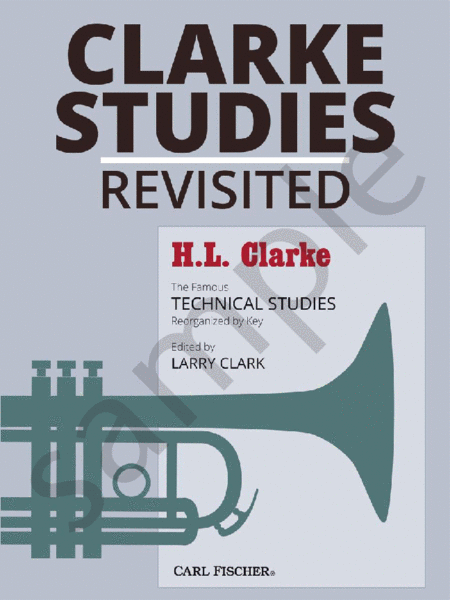
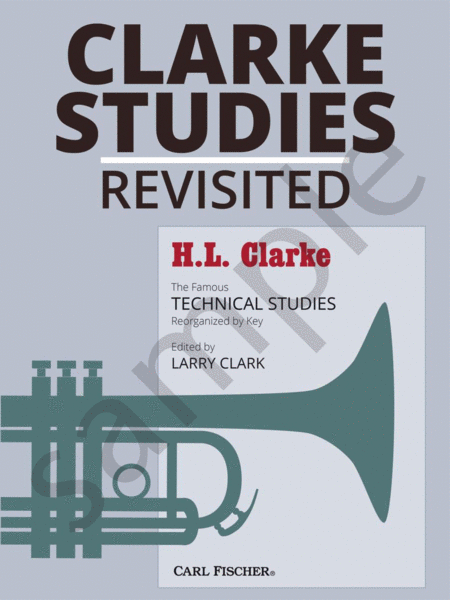
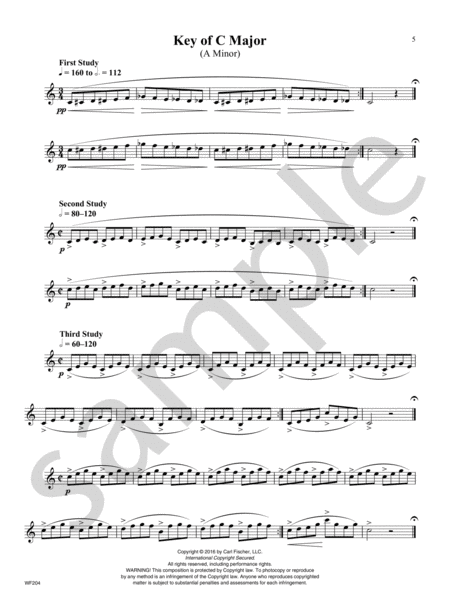
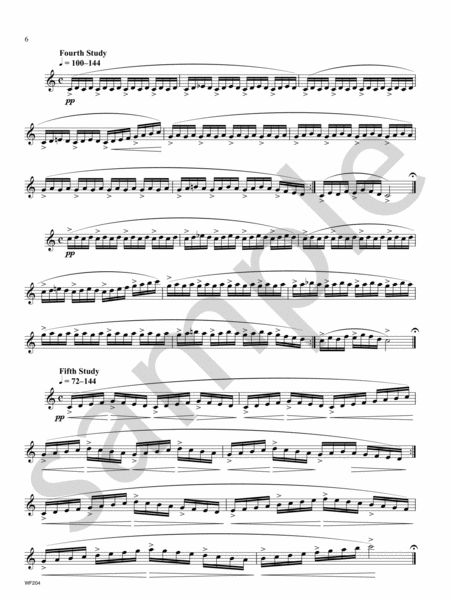
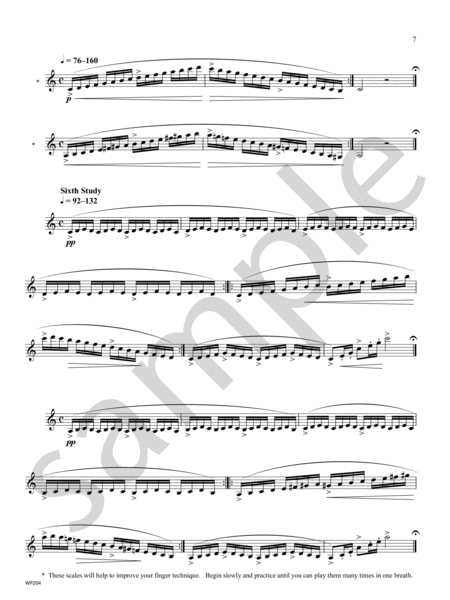
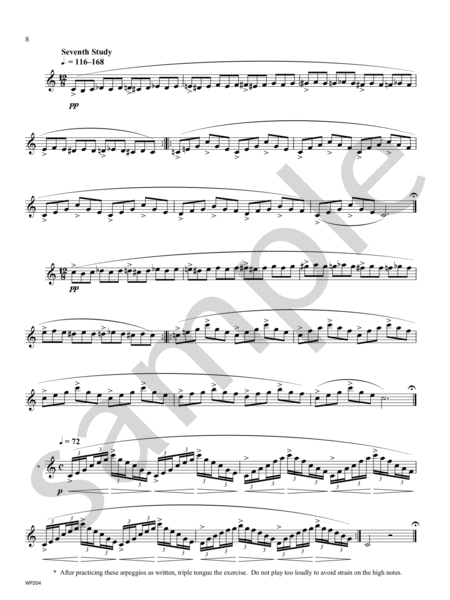
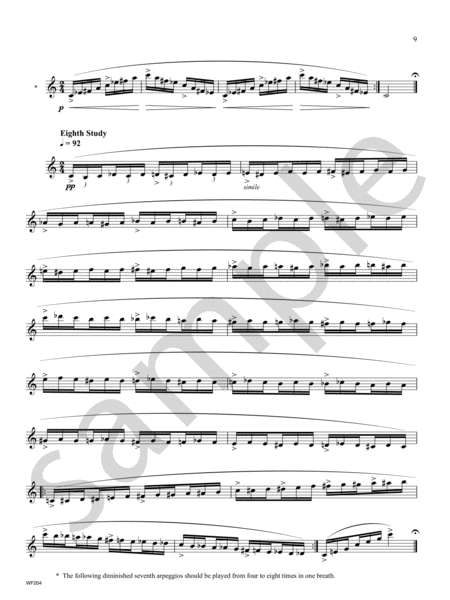
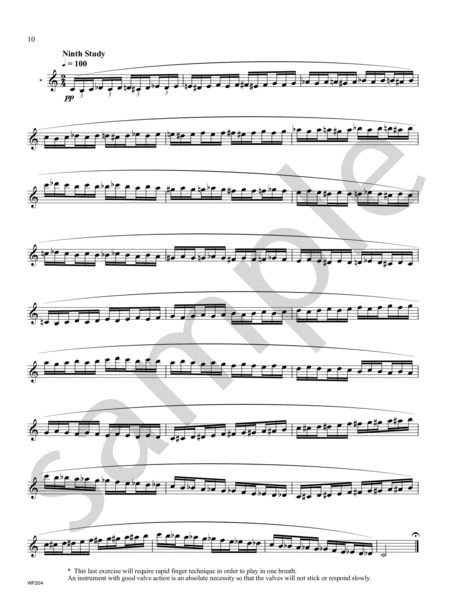
 Share
Share